PROVINCETOWN — A longtime haven for artisans and crafters looking for affordable spaces to create and sell their work is up for sale.
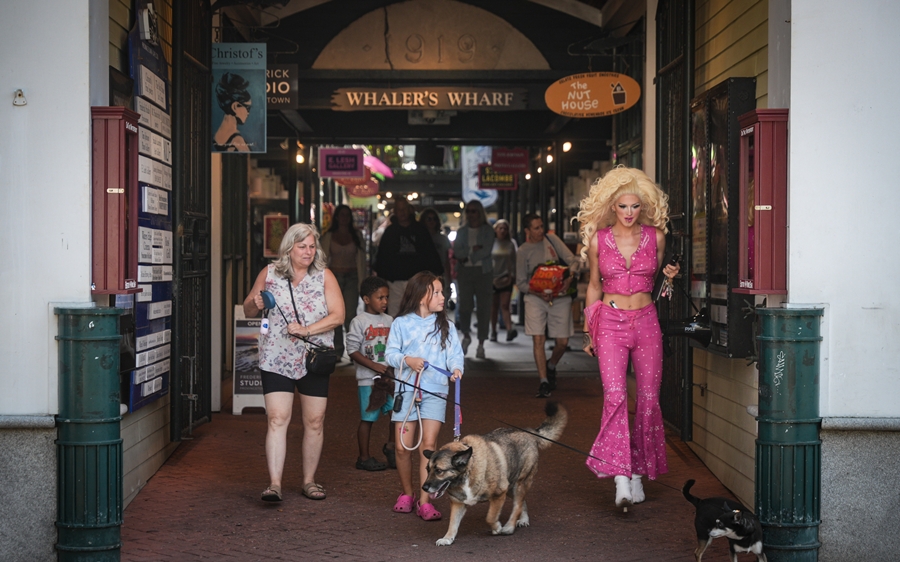
At the same time, a change made last month to the master deed for most of the building known as Whalers Wharf opens the door to the redevelopment of those commercial spaces into residential condos. Until now, only one unit, a third-floor penthouse used by one of the building’s owners, Bruce MacGregor, has been residential.
There is no official asking price for the property, according to John Ciluzzi, president of Premier Commercial, the real estate firm that is listing it. Instead, prospective buyers will decide what they are willing to pay, he said, adding that he expects the center-of-town property to generate tremendous interest.
“Buyers have flocked to Provincetown to invest because it’s one of the best places in the region to park money,” Ciluzzi said.
The three-story building at 237 Commercial St. is more than 200 feet long, with a central pedestrian arcade that connects strollers to the sandy expanse of Ryder Street beach and Provincetown Harbor. It was built in 1999 after an older building that also housed a movie theater, artists’ studios, and shops was destroyed by fire the previous year.
According to David W. Dunlap, author of the compendium Building Provincetown, parts of that building dated all the way back to 1919, when the 600-seat Provincetown Theatre opened there. Jewelry maker Dale Elmer bought that building and combined it with a crafts shop he owned next door in 1973, Dunlap reports, creating Whalers Wharf as “a kind of artisans’ collective and craft market” operating in the orchestra level of the old theater.
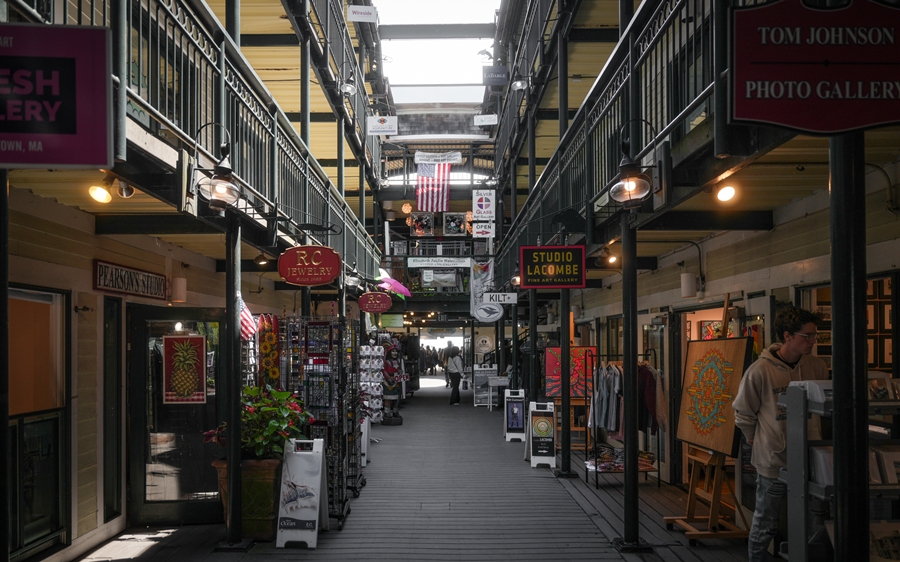
Elmer continued to show movies in the front part of the property, then sold it in 1999 to business partners Paul deRuyter and MacGregor, who formed Whalers Wharf LLC.
For the last 26 years, MacGregor and deRuyter — first Paul, then his son Ben — continued Elmer’s practice of leasing out the commercial units at affordable rates to artisans, whose wares line the pedestrian arcade. Small shops and studios share space on the second floor, while the third floor is quieter and includes an accounting firm and an acupuncturist.
For the last five years, the Provincetown Independent has leased a unit on the ground floor of Whalers Wharf for its newsroom.
The building was converted into 52 condos in 2007; deRuyter and MacGregor own 45 of them, which are for sale as a block, while the Provincetown Film Society purchased the other seven in 2011.

The 45 units now for sale add up to 16,195 square feet of the 29,465-square-foot building, according to Ciluzzi’s listing.
Ben deRuyter told the Independent in an email that “the MacGregor family and I made the decision to list Whalers Wharf for sale after careful consideration.” The business partners have “always prioritized creating an environment where individuals and small businesses can thrive,” he wrote. “That will continue to be my focus as we navigate this process.”
Worried Tenants
Several tenants told the Independent they were worried about a sale because it could lead to much higher rents. The prospect of a new owner converting many of the units to residential worried some even more.
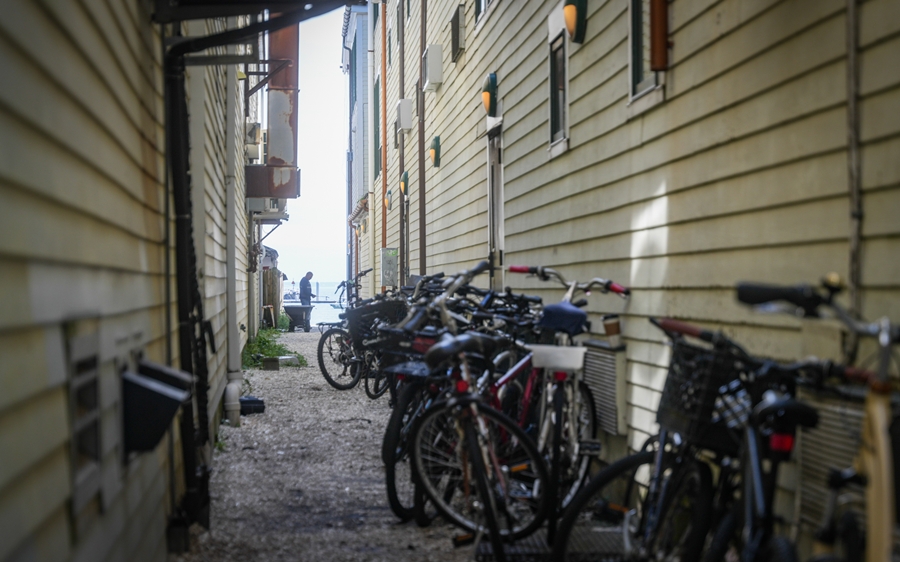
Gaston Lacombe, who paints and sells his art in a rented space on the first floor of Whalers Wharf, said he was able to transition into making art for a living in a second-floor unit that he rented for two years. The affordable rent, especially upstairs, gave him time to develop as an artist and build a clientele, he said.
“I was able to move downstairs and actually start a whole business down here,” said Lacombe. “If I had not had the opportunity to access these spaces, I would not have a career right now.”
Lacombe worries that more than 30 businesses and artists could be displaced by luxury condos. “It’s going to be a dead space in the center of town where nothing’s going to happen: no liveliness, no happiness, just condos that will be used two months a year,” he said.
At town meeting on April 7, voters overwhelmingly approved a zoning article to create a mixed-use overlay district designed to prevent such an outcome. The new bylaw requires buildings along the central stretch of Commercial Street to retain some ground-floor commercial space in any future redevelopment if the building held commercial uses as of April 7, 2025 — the day of town meeting.
The bylaw may have been written with smaller buildings in mind, however. It requires that the 1,500 square feet nearest Commercial Street on the ground floor be retained as commercial space if the building contained at least that much commercial space on April 7.
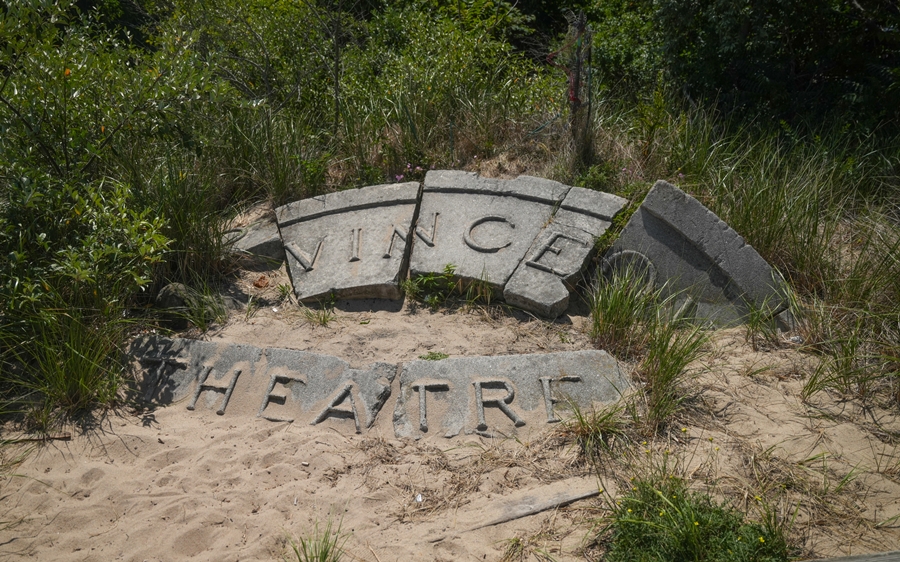
The ground floor of Whalers Wharf currently contains 6,402 square feet of commercial space, according to Ciluzzi’s listing. That means the town’s new bylaw would protect less than a fourth of the ground floor’s area from residential conversion.
The July 18 amendment to the condominium trust’s master deed allows for units on any floor to be converted to residential use, although the real estate listing describes the potential for new residential use on the second and third floors only.
Ciluzzi said that converting units to residential use is definitely an option some buyers will consider — but he said that a buyer planning to move toward redevelopment would likely retain retail and office space on the first floor.
“This would all be obviously contingent upon permitting through the local government boards,” Ciluzzi said.
Lacombe said he is skeptical that mixed commercial and residential uses would work at Whalers Wharf.
“You can tell anybody who wants to live here that this is probably the noisiest place in town,” he said, pointing to “kids screaming” as they run to the beach. “Imagine living here and trying to get some sleep in the morning,” he said.
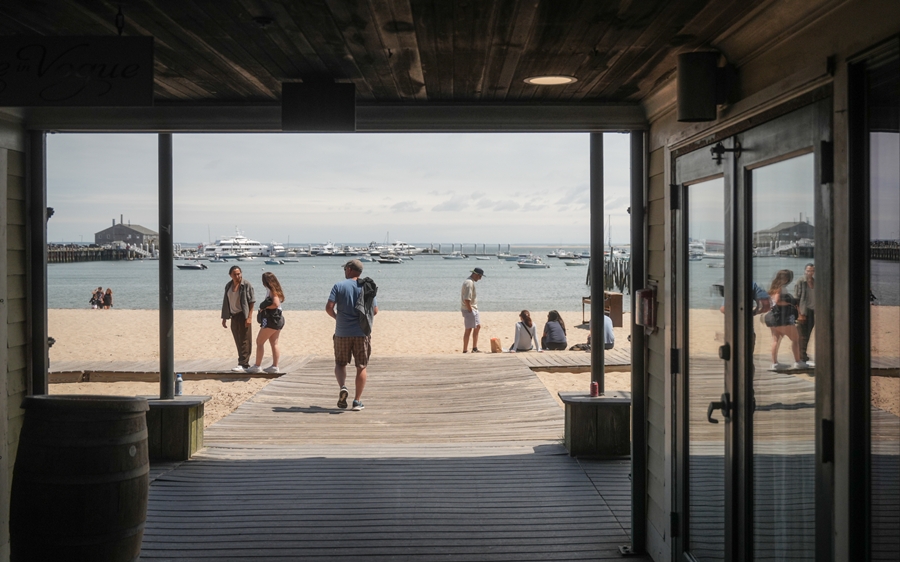
Tom Johnson, owner of an eponymous photo gallery on the ground floor next to Lacombe’s studio, said he has rented space here for 25 years. Most tenants he has spoken to have leases, he said, but he worries about what will happen when they expire.
“Who knows what they are going to do — maybe double the rent or not renew,” Johnson said. “At this point in my career, I don’t want to start over somewhere else.”
Christie Andresen cuts and assembles stained glass art in a studio on the second floor of Whalers Wharf and sells them in a shop she shares with Elizabeth Zeldin, who paints watercolors.
“Everything in here was made by us,” said Andresen, who added that she has had her unit there for about nine years.
While many tenant businesses are open only from April to October, Andresen said, she keeps her business open year-round. She hopes that will give her some bargaining power with new owners.
“I’d like to talk to them about being the last of the craftsmen in Provincetown,” she said. “I’d like to think there’s some value in that.”
The sign outside RC Jewelry boasts “since 1985,” but owner and jewelry maker Ricardo Cuencas said he has been in the building — and the one before it — since the mid-1970s.
He said 12 artists sell their work in his shop on the ground floor, and in an upstairs studio, he still makes his own jewelry, sometimes arriving at 6 a.m. when the building is quiet.
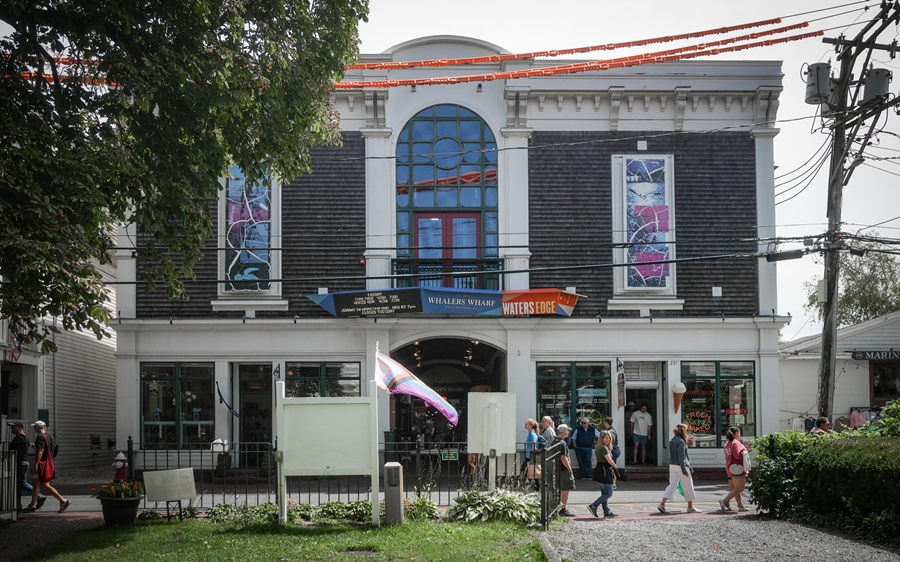
“I’m not jumping to conclusions,” he said, but “some people are freaking out.”
Kim Leonard and Rita Bean, owners of the Nut House, said they have been selling ice cream, candy, and fudge in Whalers Wharf for 25 years.
“This business is very strong,” Leonard said. “It’s not going anywhere.”
Besides selling treats in a vacation town, her business has one other advantage. It is in one of two units directly facing Commercial Street, so the town’s new bylaw means it cannot be made residential.
Paul Benson contributed reporting.



